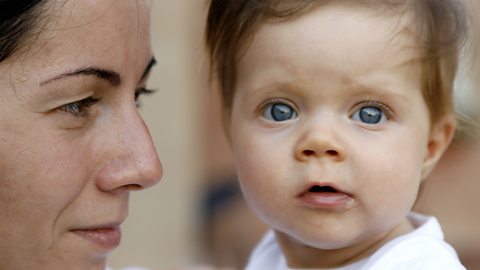Characteristics
Characteristics are passed from parents to offspring.
Humans have 46 chromosome Genetic structures that usually occur in functional pairs in the nucleus of cells (except gametes and bacteria). arranged into 23 pairs.
A gene is a small section of DNA that codes for a characteristic (e.g. eye colour).

Alleles are different forms of the same gene, for example blue and brown are both alleles of the eye colour gene.
Similar genes occupy the same position on both chromosomes in the pair.
Monohybrid cross
These are genetic diagrams consisting of one characteristic controlled by one gene with two alleles.
Alleles can be dominant or recessive.
Dominant alleles will be expressed even if a recessive allele is present.
Recessive alleles will be overridden by the presence of a dominant allele.
Two recessive alleles (no dominant) need to be present for the recessive characteristic to be expressed in the phenotypeThe visible characteristics of an organism which occur as a result of its genes..
The phenotype is the outward expression of a gene (i.e. the physical appearance).
The genotype is a set of paired symbols used to represent the alleles present. The genotype can be homozygous (the same, BB or bb) or heterozygous (different, Bb).
During meiosisCell division that produces haploid gametes. , gameteSex cell (sperm in males and ova/eggs in females). with only one gene for each characteristic are produced, meaning parents can only pass on one allele for each characteristic to their offspring.